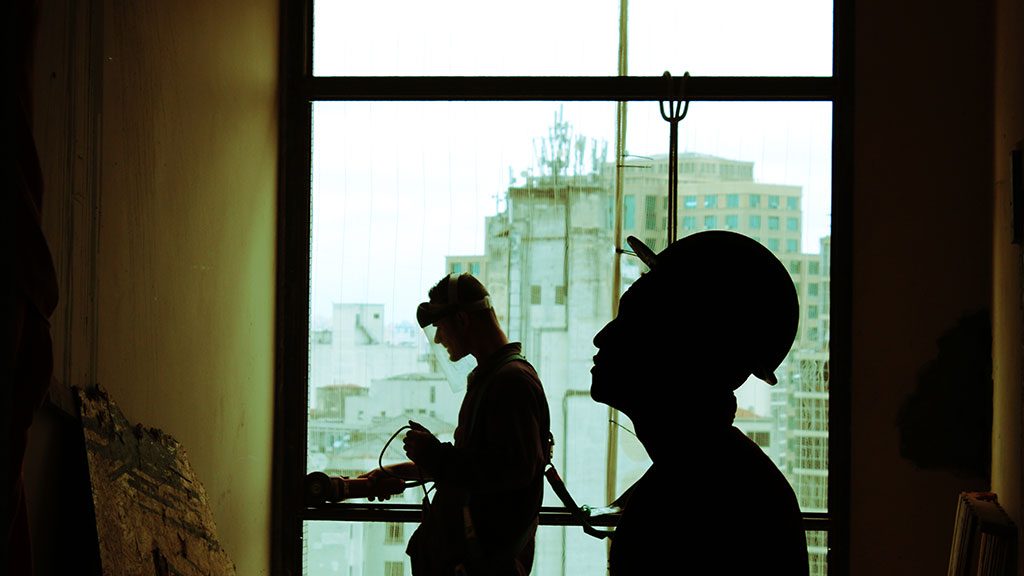The Construction Record, Canada’s only regularly running construction industry podcast, spoke to British Columbia Construction Safety Alliance executive director Mike McKenna and Mierau Contractors Ltd. president Kevin Mierau about a new online tool for quantifying silica levels on worksites and its application both in British Columbia and across the country.
We’ve shared some highlights of our interview below. The Daily Commercial News and The Journal of Commerce, Canada’s two longest-standing construction industry publications, are the creators of The Construction Record which is available on iTunes, Google Play and at www.dcnonl.com and www.joconl.com.
How does the tool work, what’s it for and how did it come about?
McKenna: Via a tripartite project with the University of British Columbia, WorkSafeBC and industry through the British Columbia Construction Safety Alliance (BCCSA), we’ve developed a web-based exposure control tool that allows contractors in real time to determine if they’re meeting their regulations as it pertains to silica exposure.
Through our partnership with WorkSafeBC we’ve made it available to not only the 40,000 construction employers but also the 256,000 employers within the province of British Columbia. It’s simple to use, and we’ve had over 5,000 folks using it.
Really what we want to let people know is that it is available and it allows them to ensure that if their employees are dealing with any substance that produces silica, and just to give you context, concrete, which is behind water one of the most consumed products in the entire world, is full of silica.
Over the past 20 years, there’s been more concrete poured in China than has been poured in all of North America in the last 100 years, so there’s a lot of concrete out there and a lot of silica out there. In the construction sector, people are disturbing silica all the time.
We’ve got this tool now that allows a contractor like Kevin Mierau in real time, if he’s going to be cutting concrete, to put in how long he’s going to be cutting it, what type of tool he’s going to be using, what type of PPE he’s going to be using and then he can put all that data into the web-based tool on his phone and the tool will tell him if he’s actually exposing workers beyond the regulatory limits or not. Then he’s able to adjust what types of exposure control that he’s using to help bring him below the level and the tool will tell him once he’s below the level and it’ll produce all the paperwork that’s acceptable to WorkSafeBC.
We want to get this thing out across the country. We’ve got partnerships with the University of British Columbia and they’re currently out doing more testing in Alberta and Manitoba.
How does this tool affect a contractor’s work?
Mierau: As a contractor, it makes safety quite simple for us. We have subcontrators that come in, they can be smaller, one man, two man, and some large sophisticated companies, but it’s a universal tool with which we can assess a risk to make our site safer.
Is there industry demand for this tool?
Mierau: There’s definitely a demand for it. Silica is encountered on virtually every project and there hasn’t been the knowledge to prepare the plans, and in a busy environment, safety doesn’t always come to the forefront. But if we have simple tools that are effective and recognized by those who are using the tool and have the oversight on what we’re doing, it’s become quite effective and widely used in our projects.
Silica is the “new asbestos.” What are the dangers of this material?
Mckenna: What we’re finding now is that when we look at the data of folks who’ve visited hospitals, and we retroactively look to see how much of the cancers that have been caused were due to silica, we’re seeing that the numbers are far greater than we ever realized in the past. Where we thought that silica dust was not an issue, we’re seeing that the data is pointing us in a very different direction.
What’s interesting about silica, is that if you see a cloud from someone disturbing products that have silica in them, like aggregate or concrete, it’s not the substances you can see that are the problem, it’s the substances you can’t see. So that’s a real added nuance for someone like myself, who just assumed that if you couldn’t see the silica or the dust, everything was OK.
We need to be really careful and I think that it helps us to get a bit of a registry together as well, to start to have this data available to everyone. We tend to shout safety and whisper health and I think it’s going to give us an opportunity to keep workers safe, and to Kevin’s point, do it in such a manner that we don’t become safety companies that do construction but we remain construction companies that keep safety at the forefront, that are able to achieve good safety outcomes simply and in a very practical way.
The model, the tool and the system are built, but they aren’t limited to silica. If we wanted to use it with other substances like asbestos, lead or even noise, I think this nice alchemy that we have with industry, the regulator and with academia is a perfect mix to ensure that we’ve got findings that are defensible, and that we’re getting outcomes that at the end of the day are going to be used within the industry.
What fields would you like to see this applied to?
Mierau: Confined spaces could be an area the tool could be tied into, infection control measures and health care, pretty much any area where we need a plan put together and can simply go through a tool and don’t have to go through a regulation or handbook to determine the solution.
Is the tool available now?
McKenna: Thousands of contractors in B.C. are using it and we’re also looking to make it available in other jurisdictions. We’re not looking to get the BCCSA name across the country; that’s not the aim of this. We made it available to other jurisdictions and they can reskin it any way they want. Each jurisdiction in Canada has different levels so we built it so it’s very “generalizable.”
WorkSafeBC officers are now requesting the exposure control plans that it’s producing as part of their regular routines. It’s fully supported by the regulator, academia and industry, which is pretty rare and we really need to get the word out because there’s a lot of good that can come of this.
For more information on the tool, visit https://www.bccsa.ca/Silica-Control-Tool.html.











Recent Comments
comments for this post are closed